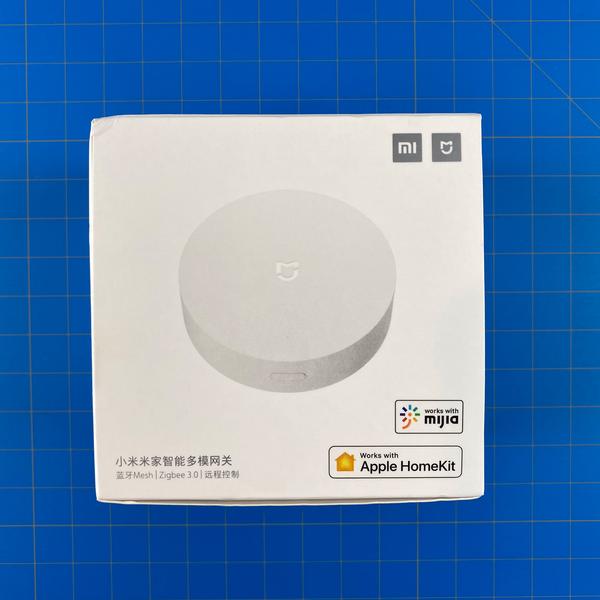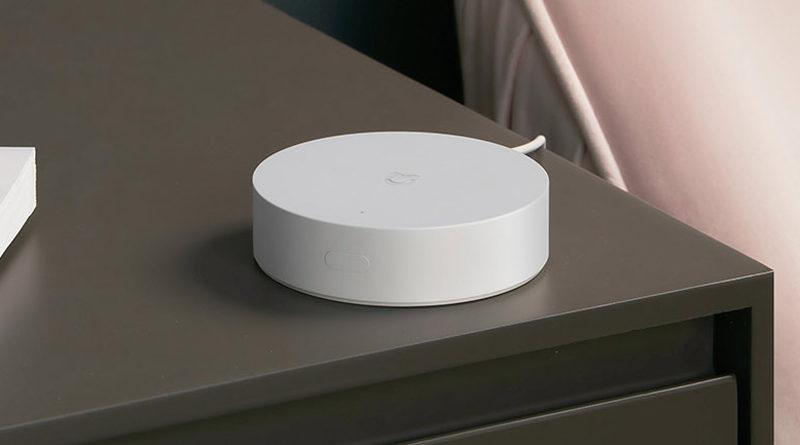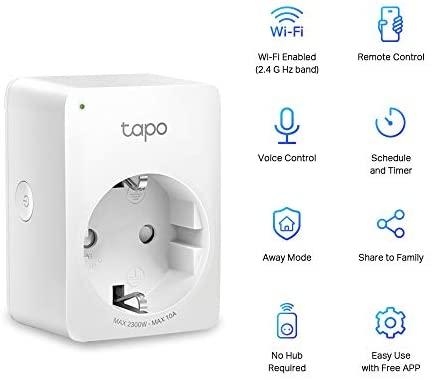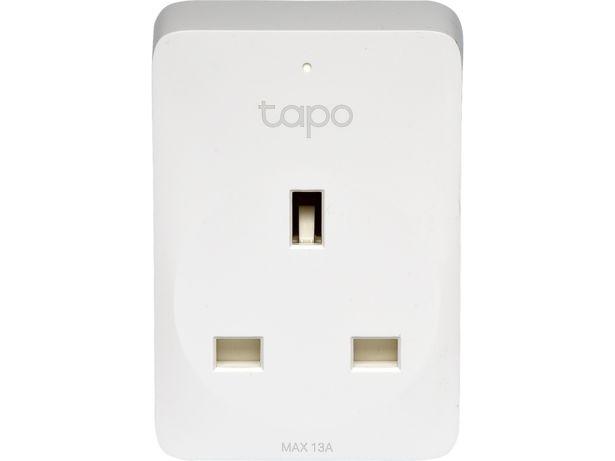Mi Smart Gateway (review)
We’re now into 2020, and what better way to start things off with a new product review! Today we’re looking at a device we first reported on way back in May of 2019, and although this surfaced after news of the Aqara M2 Hub, it seems to have been first ‘past the post’ in terms of getting into stores. Being first is one thing, but it doesn’t necessarily mean the best, and today I’d like to see if that rings true in this case.
By way of an introduction to the Mi Smart Gateway, it’s really just an evolution of the original Mi hub, which, like the current Aqara hub, is a pill-shaped gateway with the plug built right into the device itself. This new hub differs on many levels, first of which is that it is HomeKit compatible out of the box. It also no longer has the built-in plug and doesn’t come with either a speaker or a night light. So, is this a step forward or a step back? Let’s find out…
PACKAGING
The packaging for the Mi Smart Gateway follows the same theme as previous recent products, with a white box, featuring the product on the front, icons to the side that tout certain features, and the specifications on the back. Of note, is that the HomeKit logo appears on the front, which is reassuring for anyone who’s unsure which devices are or aren’t compatible; This is. It also features the ‘Works with Mijia’ logo, so this will work in the Mi Home app exclusively, and will not work with the Aqara app, in case you were wondering. The rear of the box is also notable in that it’s the first time (that I’m aware of) that the official Zigbee logo has been used. Indeed, it also says below the logo that this is a certified product, which I’m taking to mean they’ve jumped through all the right hoops in order to get to this state. Below that is a Bluetooth logo. The reason for this is that whilst this is ostensibly a Zigbee hub, it also acts as a Bluetooth hub and a Bluetooth mesh hub, which I’ll go into later.
The sides of the box point out these latter two capabilities, stating that this hub is both a Bluetooth Mesh Gateway as well as a Zigbee 3.0 gateway. The other side of the box simply states that you can use the app to control your devices, including the hub, as well as create automations.
Inside the box, you first get to see the gateway itself, along with a manual (in Chinese), which includes the first of three instances of the HomeKit code. The gateway has a bit of protection by way of an extra lid inside the box, made of strong card. The lid also contains the second of three HomeKit codes. Underneath the hub is the section that holds a USB to micro USB cable and a type A (non-polarised) 2-pin USB plug charger.
THE HUB
The gateway itself is a very understated, being just pill-shaped piece of plastic, at 25mm/0.98in in height, and 90mm/3.54in in diameter. The top features the Mijia ‘shield’ logo and a very small LED, whilst the base has the third of the three HomeKit codes.
the rear and front of the gateway are similarly minimalist, with only one button on the front, which you can use for manually pairing a device, or for resetting the gateway. The rear features a micro-USB port for the included USB cable, in order to power the device. This is one of the areas where the new gateway differs from all previous models. As already mentioned, the previous Mi gateways, including the current Aqara gateway, had a built-in plug. This is problematic in that not only does the hub take up two wall sockets due to the placement of the pins and the size of the device, if you owned a hub that has a different plug to the ones in your country, then an adaptor would also be required.
As the new gateway uses a typical USB power supply, you’re able to replace the provided power supply with one better suited to your region, and as it uses a micro-USB cable, both parts are easy to replace when needed. The USB cable isn’t particularly long, at roughly 850mm/33.4in in length, but as already stated, you can replace this with a longer, or shorter one if you wish.
When I first opened the box and held the hub in my hand, I briefly thought I’d been sent a fake empty case, as it was so light (94g/3.32oz), it felt like there could be hardly anything inside. Luckily my paranoia was misplaced once I plugged it in and got it set up. The plastic used for the device is the same matt type plastic you find on a lot of recent Xiaomi ecosystem products, that are slightly silky to the touch, and resistant to fingerprints, not that you’d have much cause to handle the device. The base has a circular rubber ring to keep it from sliding around if placed on any smooth surface. All in all, it’s a really nice and understated piece of design.
What the gateway doesn’t have, which all previous iterations did, is a speaker and night light. Xiaomi has stated that due to feedback they’ve collected over a period of time, many of their users didn’t feel the need for the night light or the speaker, and so cut those out in order to concentrate on the hub aspect of this device. In many ways, I would agree with this, but I do still find uses for both the night light and the speaker, despite the crappy sounds the older hubs ship with, so I’m not entirely sure this was a good move. Bravo to the company for replacing the built-in plug with a cable though.
Whilst the new gateway doesn’t have a speaker as such, it does have a sort of ‘bleeper’ unit inside, which in itself is fairly loud. You only tend to hear this sound when you’re adding a device or you’ve set the gateway to play the sound via a notification.
SETUP – MI HOME
Update: Since this review was written, the Mi smart Gateway is now able to be added to any region/server in the Mi Home app, even if you originally purchased the hub from one of the online Chinese stores.
Whilst the hub comes with a HomeKit code, you’re still advised to add this to Mi Home first, which if you haven’t done so already, will require you to set up an account in the respective app. Assuming you’ve done all this already, as this is designed for the Chinese market, at present you’re going to need to set the server to Chinese Mainland in order to add this device to Mi Home. Once that’s done, simply add the gateway by clicking on the ‘plus’ icon in the top left corner of the home screen. which will take you to an enormous grid of devices broken down into categories.
APPLE HOME APP
If you head over to the Home app, you might be surprised to see (or rather not see) that the new gateway is nowhere to be seen. It’s there, but unlike the Aqara hub you may already own, as this is purely a hub, and not a night light and alarm, it really only belongs in the hub section of the app.
HUB COMPATIBLE DEVICES
So you have your hub in Mi Home and Apple Home app, but what next? Well, as with the Aqara hub, you’re eventually going to want to start adding some devices. Above are three screenshots to show which ZigBee devices are currently supported (at the time of writing), but I’ll list them here too;
Switches/buttons
Sensors
Smart plugs and outlets
Lighting
Miscellaneous
There are a couple of placeholders for devices that when pressed, appear to be the forthcoming Aqara light detection sensor, and the Aqara US Light switches, but they fail to add after a few seconds, so there seems to be some work to do. If you were to compare this list to what can be added to the Aqara hub via the Mi Home app, there are a few omissions – once again, this is at the time of writing. By the time you read this review, these devices may well be added to the list;

It would seem whilst the current list of devices compatible with the Mi Smart Gateway isn’t as complete as it is for the Aqara gateway (at the time of writing this review), many of these devices are in fact supported, just not officially at this time, hence their omission. I’m fairly confident that the list of devices will continue to grow, and have since been informed that some devices previously not listed are now visible in the latest list to appear in Mi Home, which is updated from the cloud and doesn’t require an update as such.
There are also a few devices listed in the Aqara app that aren’t listed as officially being able to be added to the Mi Smart Gateway;
That’s quite a long list of devices that can’t be added, at least not officially, but as already stated, pretty much nearly every device that can be added to the Aqara hub right now will be supported by the Mi Smart Gateway at some point. As to whether this device is actually worth buying over the Aqara hub or even the forthcoming Aqara M2, is a pertinent question. We’ll address that a bit later, but at this point, it would appear that the Aqara hub still has an edge over this device;
Points in favour of the Aqara Hub compared to the Mi Smart Gateway;
Points in favour of the Mi Smart Gateway compared to the Aqara Hub;
In the original version of this review, we reported on this device only supporting up to 32 devices. Later, from information we were supplied with soon after the review was published, in terms of the number of devices it can handle, it seems that the device can support up to 64 devices (various online stores, including Xiaomi’s official 3rd party store – Xiaomi Youpin – are reporting the number to be 32 devices), which is double the official number of devices the current Aqara Hub can handle. The mi.com online store for Mainland China states it can support up to 64 devices, so it seems it’s a case of who to believe. Given that the Mi smart Gateway is a brand new model, and therefore an upgrade, it’s logical to presume they would have doubled the amount of supported Zigbee devices from the original number. Additionally, Sebastian G, our source for all things Xiaomi, was previously able to dig into the backend of the Mi Home app to get information on the number of devices the gateway supported, which at that time was also listed as 64. So, it’s 32 or 64, depending on where you read it and who you believe!
Both the Aqara Hub and the Mi Smart Gateway are compatible with many of the Xiaomi Smart Home ecosystem ZigBee devices, although as previously mentioned, the Mi Smart Gateway is the first ZigBee device to attain ‘certified status’ from ZigBee, so in theory, the hub should be more compatible with 3rd party ZigBee devices, which looks promising when you see a few Ikea bulbs listed. If you currently try adding an Ikea bulb to either the previous-gen Mi Gateway, the Aqara G2 Camera hub or the current Aqara hub, you’ll get nowhere. This does not mean that the Mi Smart Gateway will necessarily expose the Ikea bulbs, or any other ZigBee device to HomeKit however, so unless you’re only invested in the Mi Home side of things, it may be of less interest to you.
BLUETOOTH DEVICES
Besides the hub using Zigbee, it can act as a hub for Bluetooth devices as well. Ordinarily, if you have any Xiaomi ecosystem devices, you would connect directly to them with your phone, but with this gateway, you can connect to them via wifi (via the hub). Although it’s a welcome addition, there are actually quite a few Xiaomi smart devices that already contain Bluetooth gateways, like the older Mi Security Camera and the Mi Multi-Sensor for example. Where Bluetooth connectivity does possibly become more important is with the Bluetooth Mesh gateway functionality, which essentially works in the same way that Zigbee does, in creating a network amongst devices, with devices in that network able relay information from one device to another as long as one device is within range of another, thus spreading the network device by device.
Adding Bluetooth devices doesn’t happen via the hub itself, instead, the Mi Home app allows you to discover Bluetooth devices, rather than select them from a list. The Bluetooth gateway part of the hub will then pick up these devices so that you can connect to them through the hub, rather than have to directly connect to them, which would require you to be within Bluetooth range of the device in questions.
As of yet, there aren’t too many Bluetooth Mesh products available in order to test the Bluetooth Mesh side of things. Currently, Yeelight has four Bluetooth mesh bulbs that are designed to work with their forthcoming HomeKit compatible Bluetooth Mesh Hub; an E27 bulb, an E14 bulb, along with a Downlight and a Spot Light. These should also be compatible with the Bluetooth Mesh gateway inside the Mi Smart Gateway, although we’ve yet to test any of these products.
ADDING DEVICES TO THE HUB
Adding devices to the hub has to be done via the Mi Home app, but thankfully it’s very easy.
Your device is now in the Mi Home app and will be automatically be exposed to HomeKit
ALARM FUNCTIONALITY
You’re probably wondering why, if the gateway has no speaker, would there be an alarm function. Well, although it doesn’t have a speaker as such, there is a sort of beeper/buzzer built in, which is the same one you hear ‘beeping’ when installing or removing a device for example. This is nowhere near as loud as the alarm on the Aqara hub, but it is loud enough to be annoying after a couple of seconds.
In the alarm (Guard) section, you have the four modes we’re starting to see appear more regularly in HomeKit, with the introduction of Abode to HomeKit, along with the recently released Onvis Security Alarm Contact sensor (read our review HERE). These modes; Basic, Home, Away, and Sleep, are designed for different scenarios, which allows for different sensors to be chosen for the different modes if you wish. For example, you might just want the door sensor as a trigger device if you’re at home, whilst you may want motion sensors in the daytime areas as triggers for when you’re asleep (sleep mode), and maybe all the sensors as triggers when you’re away (Away Mode).
The Guard screen shows a ‘radar’ type of graphic, that when turned on has a rotating line much as you’d see on a radar screen. Below that are buttons for three modes, which when pressed, activate that specific alarm type. You don’t see the ‘basic’ alarm here, as that’s always active. This can be used for devices that always have to be ‘on’, like water leak sensors, gas or smoke sensors etc. Below the mode buttons are panels for adding an alarm trigger device, the alert log, and adding a child device.
You also have access to other settings for the alarms by clicking on the three dots in the top left corner of the screen. You can customise the settings for each alarm mode, with the alert tone volume, the alert duration, and a countdown before an alarm is triggered. So, if you want an alarm to sound 10 seconds after a door sensor is triggered, then that can be done here.
In order to use the modes, you obviously need some kind of triggering device, whether that’s a door sensor, or a motion sensor etc. You’re not able to use the same sensor for the Basic mode and the other modes at the same time, due to the Basic mode being on permanently. Whilst the gateway doesn’t have a speaker, only the beeper I previously mentioned, the alarms work as expected. In ‘Home mode’, if a sensor is triggered, the beep sound is high pitched and not as piercing, whilst the beep used in Sleep, Basic and Away modes is of a lower pitch, but louder. If I were to compare the sound to something else, I’d say it’s somewhat akin to the sound you might have on a basic electronic alarm clock. So, enough to wake you up, but not suitable as a real alarm that would be heard by either an intruder or neighbours. As this hub isn’t an alarm in the sense that the Aqara hub is, this doesn’t get exposed to HomeKit as such, which in turn means you don’t get access to either the basic arm/disarm feature in the Home app, let alone the full four modes.
So, if it doesn’t have a decently loud enough speaker, what’s the point of the alarm? Well, not a lot at this time it seems! I can only imagine they are either planning on introducing a standalone alarm at some point, as we did discover evidence of Aqara working on something like this in the Summer of last year, which would be great – if it were HomeKit compatible of course. There is the option to create an automation that will trigger the alarm in another hub, like the Aqara or other Mi Gateways, so if you’re in need of an extra hub to complement an existing hub, then this works, but if you’re replacing an existing Mi hub, you’re gaining homekit functionality, but losing the alarm and night light function. If it’s your first hub, then it would really make sense to get the Aqara hub at this point, or wait for the Aqara M2.
IN USE / SUMMING UP
I’ve been using Aqara hubs since they were released back in August 2018, and despite a few issues here and there, they’ve been generally very reliable. The sensors that work with the hubs have also been among the best sensors and switches in my HomeKit setup, so did I need this hub to begin with? Not really. Obviously, getting something like this, with it being so cheap, allows me to review it for you, our readers, and that is the basis on which I bought it. If at some point on of my Aqara hubs decides to give up, then it’s a more than adequate replacement, minus the speaker and light, but also without the potential issue of having to use an adaptor (if I’m using the Chinese variant) and blocking two outlets with one device. This means there’s also the option for placing or mounting this elsewhere, other than directly in the wall socket if I so wish, with the help of a longer USB cable.
When it comes to how well it works, it’s a bit hard to say generally, as it doesn’t really do a lot. It’s merely a conduit for child devices to get exposed to HomeKit. On this basis, it does the job quite well, although at present it would seem that not all devices are exposed to HomeKit right now; I tried adding an Aqara double rocker switch and a four-button Aqara/Opple Switch, both of which are on the list of compatible devices. However, when I added them, neither were exposed to HomeKit, which they are if they are added to the Aqara hub. This may simply be due to the child devices needing separate certification from Apple due to them going through a new hub, despite them being certified to work with HomeKit via the Aqara hub, so I’m almost certain this is a temporary thing. Indeed, after adding the Aqara Temperature and Humidity sensor, this was immediately exposed to HomeKit, so it’s not as though all Aqara products are blocked as such. Other devices I added for test purposes, were the Mi Wireless switch, the Mi Light Sensor (which I’ll be reviewing soon) and the Mi Motion Sensor, all of which appeared in the Apple Home app soon after adding them to the Mi Smart Gateway.
There seems to be one bug, which I’ve seen at least one other person report, which originates from the hub itself. For a reason I’m not entirely sure of, the Gateway will emit two long beeps, sometimes twice in a row. I initially thought this might be as the result of a connected sensor, but this has happened at seemingly random times, even when there are no devices connected to the hub, so I’m at a loss as to why this is happening. In fact, even though this is only a beep, it’s quite annoying when it happens unexpectedly, so I’d consider this to be a simple, but a potentially big issue, if you have it in a bedroom for example.
Besides that, the device itself is easy on the eyes, and very budget-friendly coming in at between US$25-30 depending on where you buy it from and does what it sets out to do. Would I recommend it if the M2 were available? Probably not, based on the M2 having an ethernet port and a larger child device capacity, but if the M2 doesn’t deliver when it comes to Bluetooth Mesh, then it makes the playing field between the M2 and this hub a bit more level. Compared to the current Aqara hub, I’d still probably recommend sticking with the Aqara hub right now, unless the price is a major issue, as the US hub is currently more than double the price on Amazon.
For me personally, this isn’t needed, and will be placed back in its box, and await further deployment in case of emergency. This is not to say it’s no good, but as a review unit, it has served its purpose for now and can wait its turn, if I decide to try out some Bluetooth mesh lighting in the future.



